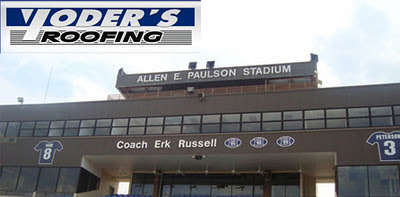 Spray Polyurethane Foam (SPF) like that offered from Conklin can be used in a variety of different applications
Spray Polyurethane Foam (SPF) like that offered from Conklin can be used in a variety of different applicationsTanks and Vessels
SPF can be a solution for cold vessel insulation for products such as wine, chemicals, and soft drinks. It is excellent to store products that need controlled temperatures. SPF systems are perfect for these type insulations because of the superior durability and ease of application.
Spray Polyurethane Foam can also be used for hot/warm vessel insulation. If there is a need to maintain temperature control and/or viscosity levels of chemicals or other liquids, SPF fluid-applied systems and protective coatings offer superior performance.
Sealants
Use polyurethane foam sealant to improve your homes “envelope” in its outer walls, ceiling, windows and floors. This is a cost effective way to improve your home’s energy efficiency and comfort in terms of thermal and sound insulation, sealing windows and doors and blocking insects and rodents.
One component can foam is an economical and effective insulating and sealing expanding polyurethane foam. Designed for sealing cracks, seams and smaller gaps, it will eliminate drafts, block insects, deaden sound and repel moisture.
Can foam expands to 2-3 times the original size of the dispensed bead and cures by reacting with the moisture (humidity) present in the air when it is dispensed. This polyurethane foam takes approximately 45 minutes to an hour to cure in 50% relative humidity. While air sealing is the primary use for these materials, they also insulate with R-values (aged) in the 3.5 to 5 inch range.
Two-component polyurethane foams (or froth foam units) come in separate containers, one for each component, and tanks operate conveniently from an upright position. Two-Component Standard Foams are ideal for Insulating and Sealing jobs that require a product designed for spray application over large surface areas or for filling large voids and gaps. Two-Component Foam is a chemically cured foam system. Each Foam pack includes both an “A” & “B” component. Dispensed through the included dispensing tool, the foam “A” and its curing agent “B” are mixed at the nozzle and cure much more quickly than One-Component Foams.
Fast chemical curing results in a higher expansion ratio for two-component polyurethane foams. This makes them suitable for spray-on applications and for filing holes and cavities. They have an R-value (aged) of approximately 6.0 per inch.
Adhesives
Spray polyurethane foam is used as an adhesive in the commercial roofing industry and the manufactured housing industries.
SPF is used to adhere EPDM membranes or boardstock insulation to various roofing substrates. The SPF is used to stick the boardstock to the roof deck and then again stick the membrane to the boardstock. The SPF is spray-applied which reduces application time and labor. The foam provides an added degree of insulation and forms a strong bond, earning it excellent wind uplift ratings.
SPF is also used in manufactured housing. The foam adhesive is used to attach wall panels and ceiling panels to structural stud framing. This has many advantages to the builder, speed of building, added strength, and lower costs.
Cold Storage
The performance of a spray applied polyurethane foam insulation (SPF) system for cold storage facilities can be affected by all the component parts of the building structure, as well as the atmospheric conditions inside and outside the structure. Proper structural design, specifications review, contractor and material selection, coupled with the compatibility and positioning of the various components of the building are a necessity to produce a successful cold storage facility.
Consult with the designer/specifier and the successful contractor to receive written confirmation of their agreement/opinion to all facets of the cold storage project, including, but not be limited to, material selection, moisture vapor transmission, load design, expansion joints, and refrigeration requirements, flashing details, and floor, wall, ceiling preparation, and pull down schedule.
Types of cold storage facilities
Refrigerated warehouses generally have a single function of storing previously processed or frozen food at a constant temperature between -40oC (-40oF) and 10oC (50oF). They are often one room buildings. Packaged goods are stored on pallets or food racks.
Processing plants for meats, poultry, dairy or other food products are multi-functional type structures which are quite complex. They typically consist of many rooms, each with a certain function, operating temperature and humidity condition.
Distribution centers are multi-room buildings for packaged dry goods, frozen foods, fresh produce, baked goods and dairy products. In addition to the above, these centers may contain specialty rooms such as banana rooms or ice cream holding rooms.
Existing facilities may be converted to another use, i.e., a cooler may be converted to a freezer, or a new room may be added within an existing structure.
If you are interested in Spray Polyurethane Foam (SPF) for your home or building, to find a professional Conklin roofing contractor in your area, please click here
Find a Contractor here
ROOFING CONTRACTORS NEEDED IN MULTIPLE STATES!
Patton Services | (309) 303-3128 | rpatton55@comcast.net | http://www.whiteroofingsystems.com














